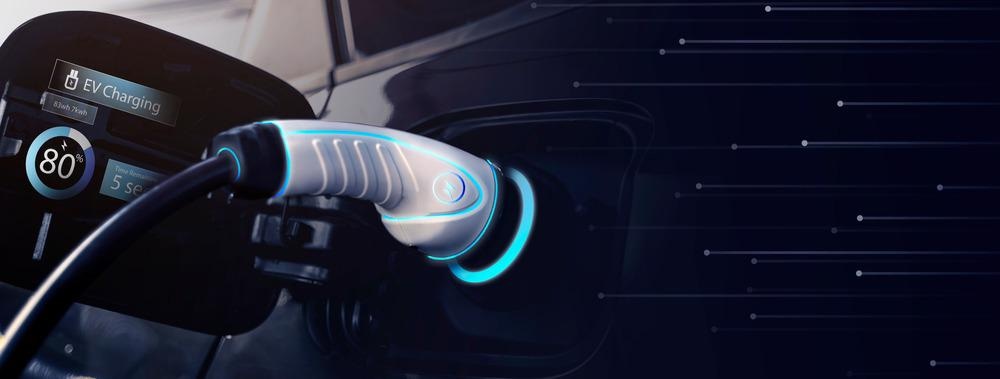In a recent study published in the journal Renewable and Sustainable Energy Reviews, researchers from Germany conducted a detailed life-cycle assessment of passenger cars.

Study: Total CO2-equivalent life-cycle emissions from commercially available passenger cars. Image Credit: Have a nice day Photo/Shutterstock.com
Climate Neutrality in the Transportation Sector
The European Commission published the European Green Deal, which consists of a strategy with the primary goal of increasing the European Union's (EU) sustainability and making Europe climate neutral by 2050. One of its significant milestones is a minimum of 50% reduction in greenhouse gas (GHG) emissions, such as CO2, by 2030 compared to 1990 levels. As a result, it is also planned to achieve climate neutrality in the transportation sector, which can primarily be accomplished by reducing GHG emissions from passenger vehicles.
The present study compares the total life-cycle greenhouse gas (GHG) emissions produced by passenger cars that use different powertrains and energy sources.
Methodology
In the present study, the total life-cycle GHG emissions were quantified in terms of CO2-equivalent (CO2-eq) values. The CO2-eq values were calculated using simple analytical models relative to the vehicle curb weight and peak motor power. Further, the emissions caused from production, use, and recycling were calculated separately using the most recent emission coefficient values, and 790 different vehicle variants were considered in total for emission calculations.
The production, utilization, and recycling emissions values were used to calculate a vehicle's total CO2 emissions. Simple analytical models were used to quantify vehicle life-cycle emissions taking variables such as curb weight, battery capacity, and drive-cycle emissions.
The production emissions values were calculated using vehicle curb weight, traction battery capacity, and relative CO2 emission. Standardized driving cycles were used to estimate vehicles' relative fuel consumption and CO2-eq. Further well-to-tank and recycling emissions associated with the passenger cars were also calculated. It must be noted that the emissions associated with the production of spare parts and vehicle maintenance were not estimated during the study by the researchers.
Results
The findings show that the total production and recycling emissions of diesel, gasoline, and compressed natural gas (CNG) vehicles are small compared to their utilization emissions. For example, the utilization emissions of a gasoline Volkswagen Passat 2.0 is 46,865 kg CO2-eq, while the recycling and production emissions are 4843 kg CO2-eq and 7538 kg CO2-eq, respectively.
Further, the additional production emissions of same-sized plug-in hybrid electric vehicles (PHEV) compared to traditional combustion engine vehicles range from 15% to 37%. However, the same value for battery electric vehicles (BEV) increased by 49%. The additional production emissions of a Tesla Model 3 matches the driving emissions of a Volkswagen Passat 2.0 after 18000 kilometers. Additionally, similar findings were found for vehicle recycling emissions, which positively impact climate change and counterbalance production emissions.
More from AZoM: A Closer Look at Thin Film Evaporation Deposition Techniques
Compared to gasoline-powered cars, the utilization emissions in diesel vehicles, CNG vehicles, fuel cell electric vehicles (FCEV), gasoline PHEVs, diesel PHEVs, and BEVs were 24%, 49%, and 65%, 58%, 41%, and 72%, respectively.
When refueling only with natural gas or charging with green electricity, the emissions savings for the compressed biogas vehicle, gasoline PHEV, diesel PHEV, and BEV were 86%,79%,75%, and 97%, respectively.
The results also indicate that vehicles with a higher curb weight produce higher GHG emissions during production and use stages. This correlation can be related to a quadratic function for combustion engines which is linear in the case of electrified engines. Furthermore, a linear correlation has been observed when total vehicle life-cycle emissions are compared to peak motor power. Despite this, the observed gradients for internal combustion engine vehicles (ICEV) are higher than for BEVs.
The results indicate that carbon emissions are lower when the BEVs are charged solely with green electricity than the ICEVs. Nevertheless, the BEVs have the highest production emissions compared to other vehicles.
Conclusions
The primary conclusion that can be drawn based on the results is that vehicle owners should prefer fully electrified vehicles and biogas-powered gas automobiles over ICEVs as they have lower carbon emissions. Furthermore, automobiles must use environmentally friendly and sustainable hydrogen, electricity, and biogas. However, it must be noted that sustainable biogas and hydrogen production on a larger scale is challenging to achieve.
As the life cycle assessment method used in the present study has its limitations, it is recommended by the researchers to use exergy and energy analysis and exergo-environmental analyses in future studies to derive new results and validate the current results.
Disclaimer: The views expressed here are those of the author expressed in their private capacity and do not necessarily represent the views of AZoM.com Limited T/A AZoNetwork the owner and operator of this website. This disclaimer forms part of the Terms and conditions of use of this website.
Source:
Johannes Buberger, Anton Kersten, Manuel Kuder, Richard Eckerle, Thomas Weyh, Torbjörn Thiringer, Total CO2-equivalent life-cycle emissions from commercially available passenger cars, Renewable and Sustainable Energy Reviews, Volume 159, 2022, 112158, ISSN 1364-0321, https://www.sciencedirect.com/science/article/pii/S1364032122000867?via%3Dihub